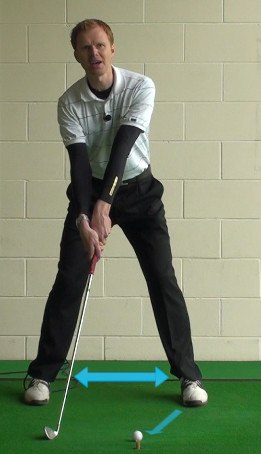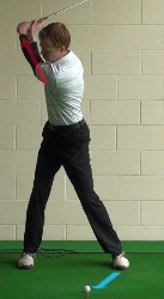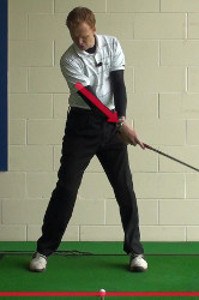
“Moe who?” you may be asking. Moe Norman – only the greatest ballstriker who ever lived.
That is, according to many who watched him play or practice, including Sam Snead and Lee Trevino. Tales of the Canadian’s feats of accuracy are legendary, verging on mythical. Like the time when, playing with Snead, he hit a drive across a bridge over a creek. On purpose.
So why is Norman, nicknamed “Pipeline Moe” by Ken Venturi, a relatively obscure figure in golf history? Largely because most of his accomplishments came in Canada, where he won 55 times as a pro. Norman ventured briefly onto the PGA Tour, but retreated to his home country because he felt unwelcomed. In fact, Norman, who died in 2004, was nearly as famous for his shy, eccentric nature as his golf game.
Like the man himself, there was nothing conventional about Norman’s methods.
Norman’s signature: Practically everything about Norman’s swing was outside the norm, from his extra-wide stance to the way he placed the clubhead a foot behind the ball at address. Most notably, though, he swung the club on a single plane going back and through the ball.
Who else does it: No professional golfers of note.

Viewed from behind, Norman appeared very stiff in his setup, standing very far from the ball with little knee bend. There was a method to his apparent madness, though. Whereas there’s a small angle between arms and shaft (at the wrists) for most golfers, Norman’s arms and shaft formed a straight line from his shoulders to the ball.
He maintained this alignment on the backswing, at impact and on the through-swing, all of which occurred on or very near the same plane (angle).
Why it worked for Norman: The genius was in Norman’s unorthodox setup. He began with very simple angles that matched his anatomy. Besides the straight arms-and-shaft alignment, the shaft also pointed to the center of his spine (when viewed looking down the target line) and at the inside of his left hip, or pivot point (viewed face-on). Norman’s in-synch upper and lower body rotations kept these angles intact from start to finish.

How it can work for you: It’s probably not wise to choose one or two elements to emulate. Norman’s swing featured a set of specific address positions, each critical to creating a single-plane motion. It also requires that your clubs be fit to precisely match your setup position.
In fact, Norman was the inspiration behind a company called Natural Golf, which used his swing principles to develop and teach a specific swing philosophy. Natural Golf was later folded into the Graves Golf Academy, which now teaches the single-plane technique. You can learn more about Moe Norman and his one-of-a-kind swing at MoeNormanGolf.com.






